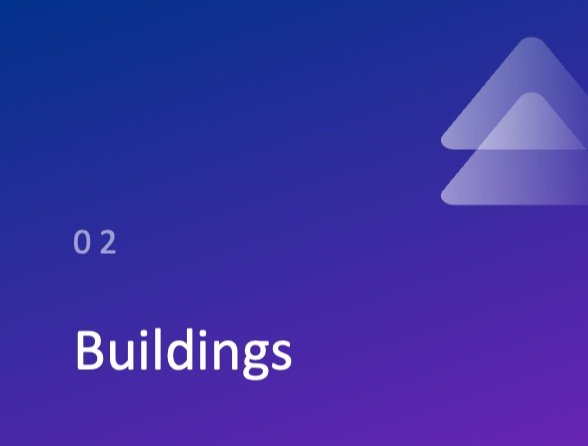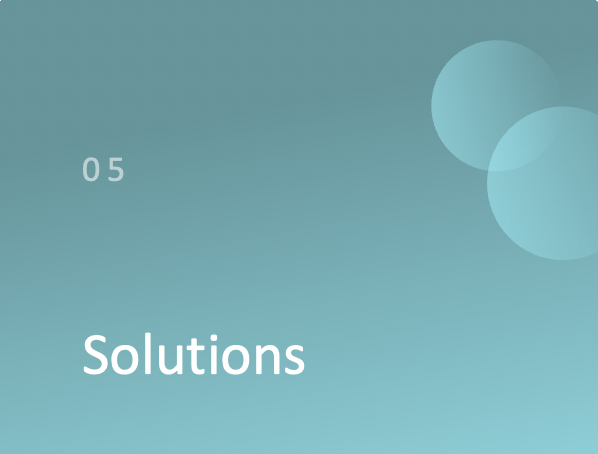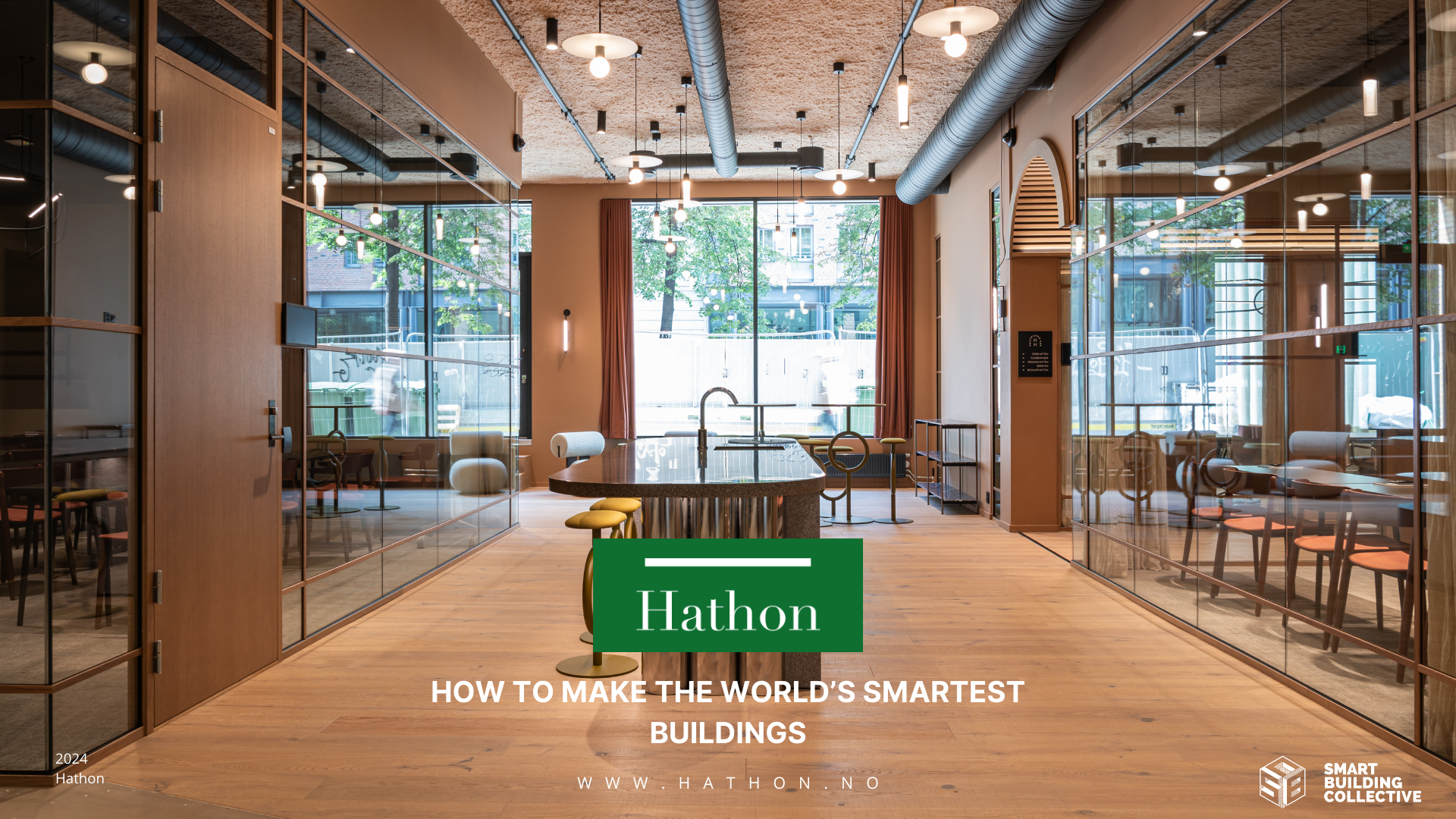

SUMMARY
The goal of this report is to share guidance and advice to help stakeholders in the built environment industry transition towards smarter buildings, using examples from some of the smartest buildings in the world. This report is centered around the Smart Building Certification Platinum certified Hausmanns Hus by Hathon in Oslo, Norway. In doing so, this report also highlights some of the environmental, economic, and social benefits of smart buildings.
A smart building refers to the application of data to drive autonomous controls or building automation to deliver improved building performance. The key to a smart building is that the data is used to inform decisions and make adjustments that lead to better buildings.
Smart buildings are becoming more and more popular as they offer many benefits over conventional buildings, including improved sustainability, healthier building users and a better business case for building owners and investors.
Approaches to build smart buildings are evolving and it can be difficult to realize this vision in an industry that is known for progressing incrementally. To build the smartest buildings requires:
Setting a clear goal and committing to it 100%, even if that means committing a higher initial budget
Clearly defining the vision for the building and identifying smart features needed to achieve this vision from Day 1
Bringing stakeholders along so that everyone involved in the building process (designers, engineers, installers, investors) understand the benefits and quality improvements that come with smart features
Committing to continued (scientific) research to refine and further improve so the building lives up to its full potential
Getting a third-party smart building certification to avoid “smartwashing” and to truly understand how smart your building is and areas for improvement
The more smart buildings that are built, the more the level of knowledge about smart features within the industry as a whole will increase. In the longer term, the impacts of the smart features will truly be understood, quantified, and qualified, as more smart buildings are managed and operated and more research into building performance is conducted. To be a leader in the field of smart buildings it is important to be curious, willing to learn, willing to be transparent and to collaborate and share with your peers and building stakeholders.




INTRODUCTION
There is a need for advancement and innovation in the built environment industry to facilitate the necessary transition to a circular economy. The sector itself has a reputation of being risk-averse, un-collaborative and wary of innovation(1), meaning that progress and innovation happens slowly and often incrementally.
One such advancement in building innovation is the increasing attention to and implementation of smart building features. Slowly but surely buildings are getting smarter, and with good reason. Smart buildings can offer superior economic, environmental and social benefits when compared to conventional buildings because smart technologies can enable more efficient, flexible and sustainable buildings (2).
Therefore, one of the key ways to advance both innovation and sustainability in the built environment, while maintaining value, is the adoption of smart solutions for new and existing buildings. Adoption of smart technologies can be difficult and complex, requiring dedication and willingness to collaborate and share lessons learned within the industry.
OBJECTIVE OF THIS REPORT
The objective of this report is to provide insight and recommendations to readers on how to approach the design and operation of smart buildings and to outline some of the economic, environmental and social advantages of smart buildings. Information in this report comes from the scientific literature and from real-world experiences of stakeholders in the smart building sphere.
WHO IS THIS REPORT FOR?
This report is intended for anyone in the built environment industry who is interested in transitioning towards and better understanding smart buildings and their benefits.
1 Hart, J.; Adams, K.; Giesekam, J.; Tingley, D. D.; Pomponi, F., Barriers and drivers in a circular economy: the case of the built environment. Procedia Cirp 2019, 80, 619-624.
2 Froufe, M. M.; Chinelli, C. K.; Guedes, A. L. A.; Haddad, A. N.; Hammad, A. W.; Soares, C. A. P., Smart buildings: Systems and drivers. Buildings 2020, 10 (9), 153.
WHAT IS A SMART BUILDING?
Smart building, as defined by the Smart Building Collective, is a constantly evolving practice of implementing, using and optimizing infrastructure to learn about and improve function, service, performance and utility of the built environment. Further, a smart building refers to the application of data to drive autonomous controls or building automation (that brings the intelligence), through integrated design which connects systems and processes to deliver improved health, wellness, human performance, comfort, efficiency, safety and security(3).
The key here is that it’s not the technology itself, nor the data collected, that makes a building smart. What makes a building smart is how that data and technology is used to make improvements. By responding to data from a sensor (e.g., a measured CO2 concentration of 1500 ppm in a room), the smart building system can warn of potentially harmful air quality and respond appropriately and efficiently (e.g., alerting occupants to the air quality and increasing ventilation to that space until the CO2 concentration has dropped to 600 ppm)(4).
WHY SMART?
Smart buildings are superior buildings when properly designed, constructed and operated. The smartest buildings offer several advantages over their traditional counterparts with respect to economic, environmental and social benefits and impacts.
ENVIRONMENTAL BENEFITS: <Smart = Sustainable>
It has taken decades for green buildings to be accepted as a better alternative to conventional buildings, and many green building concepts are still considered innovative. We also unfortunately still see a lot of greenwashing in the industry. But sustainability and green buildings have paved the way for smart. We’re seeing faster uptake and deeper understanding of the benefits as well as more urgency.
-Dr. Heather Wray, Scientist, TNO
3 Nelson, E. C. W., H. E; White, N. C., The Future of Work, Workplaces and Smart Buildings. In ACM BuildSys '22, Boston, USA, 2022.
4 Franco, A.; Leccese, F., Measurement of CO2 concentration for occupancy estimation in educational buildings with energy efficiency purposes. Journal of Building Engineering 2020, 32, 101714.

The smartest buildings are also the most sustainable buildings. In many aspects, sustainability of buildings during operation can be planned for and addressed with the right smart solutions during the conception and design of the building. Actually quantifying the sustainability impacts during the building operation phase (and making adjustments to improve) based on data from the smart technologies is a key follow-up step.
Building sustainability is often tied to energy efficiency. This is, indeed, one of the most impactful areas for overall sustainability with respect to CO2 emissions. Although building sustainability also encompasses many other facets including materials, embodied carbon, and new construction vs. renovation, energy use and efficiency is arguably the category where smart features will have the biggest impact. This is important because the operation of buildings has a huge environmental footprint, responsible for 27% of greenhouse gas emissions and 30% of global energy use (5).
A pilot study in Canada of 4 smart office buildings indicated an average energy savings of 15%, translating to annual cost savings of $818,000 and an annual reduction of 660 tons of greenhouse gas emissions (6).
In addition to energy efficiency, smart features and design also contribute to sustainability with respect to the quality and therefore the resilience and durability of the building. By including smart features that are flexible, the building is more easily adaptable and changes can be made without doing a complete overhaul, thus saving on future material and energy costs and impacts.
5 Nelson, E. C. W., H. E; White, N. C., The Future of Work, Workplaces and Smart Buildings. In ACM BuildSys '22, Boston, USA, 2022.
6 Franco, A.; Leccese, F., Measurement of CO2 concentration for occupancy estimation in educational buildings with energy efficiency purposes. Journal of Building Engineering 2020, 32, 101714.
SUSTAINABILITY, A SCANDANAVIAN TRADITION
Some of the world’s smartest and most sustainable buildings can be found in Scandinavia. This is, in part, because Scandinavian design, known for being functional, high quality and in balance with nature, is intrinsically linked to sustainability. High quality, durable and natural materials form the basis for Scandinavian design in the built environment. This can also apply to design of smart buildings, ensuring that smart features are flexible and durable to last for the life of the building while still offering the same functionality. The focus on sustainability also ties in to smart buildings in the region, given that the smartest buildings are also the most sustainable: smart features allow for huge gains in energy efficiency during building operation. Scandinavian innovation in the built environment pushes the boundaries of smart and sustainable buildings and provides benchmarks which other regions should follow. link to article

SOCIAL IMPACTS: SMART BUILDINGS FOR PEOPLE
The best and smartest buildings go above and beyond improved energy efficiency and also optimize for the people using the building - improving indoor environmental quality, health, safety and connectivity (to name a few). Indoor environmental quality is an important building metric that is gaining interest and more study in recent years. Our indoor environment affects how we feel, work, socialize and focus. For office buildings, smart features can become extremely valuable in the control of the indoor environment to maximize worker comfort, creativity, productivity and safety.
Occupants of high-performing buildings had 30% fewer symptoms of “sick building syndrome” and scored 26% higher on cognitive tests than those in conventional buildings (7).
Indoor environmental quality is therefore highly linked to building user/occupant comfort and satisfaction. In particular, low background noise, higher light levels and lower concentrations of particulate matter in the air are linked to building occupant satisfaction (8).
Smart functionality in buildings can optimize building systems which influence the comfort, happiness and health of building occupants. For example, smart technologies can measure key environmental quality parameters and respond accordingly to improve non-ideal conditions. But little is known just how much can be improved and researchers have stated the potential could be significant for both mental and physical wellbeing.
“What we can derive from neuroscience research in the workplace is that there is more potential than certainty. We should act on what we have found in the last decades, but we must continue to push our discoveries with urgency for our general wellbeing.”
-Sophie Schuller, Neuroarchitecture Researcher & PhD Candidate, Eindhoven University of Technology, Lead Applied Research EMEA, Cushman & Wakefield
ECONOMIC IMPACTS: THE BUSINESS CASE FOR SMART BUILDINGS
The motivation for smart buildings may also be economic: smart buildings have a higher building value, charge higher rents, and rent spaces more quickly than conventional buildings. In short, smart buildings make good economic sense.
Different smart features will all have different “payoffs”, whether it be cost savings (e.g., energy management), better user experience and productivity (e.g., air quality management) or building resilience (e.g., flexible smart “grid” systems).
7 MacNaughton, P.; Satish, U.; Laurent, J. G. C.; Flanigan, S.; Vallarino, J.; Coull, B.; Spengler, J. D.; Allen, J. G., The impact of working in a green certified building on cognitive function and health. Building and environment 2017, 114, 178-186.
8 Newsham, G. R.; Birt, B. J.; Arsenault, C.; Thompson, A. J.; Veitch, J. A.; Mancini, S.; Galasiu, A. D.; Gover, B. N.; Macdonald, I. A.; Burns, G. J., Do ‘green’ buildings have better indoor environments? New evidence. Building Research & Information 2013, 41 (4), 415-434.
In addition to higher building market value and ability to rent out spaces quicker at a higher rate, financial benefits of smart buildings can extend to and include:
Energy efficiency savings
Increased day-to-day productivity and happiness of building users
Fewer sick days and health risks (liability)
Increased tenant retention (extended to worker retention for office spaces)
Attracting top tenants (extended to talent acquisition for office spaces)
Insurance savings based on climate resilience
Longer lifespan/operating time prior to renovations
Marketing and dissemination value
More efficient (time-saving) building commissioning and operations
There still persists the belief in the industry that investing up-front in smart technologies is expensive with a low return on investment. The more smart buildings that are successfully planned and built so the smart features are complete and operating from day 1, and the more the benefits of smart buildings are measured and quantified, the more this belief about low ROI will be challenged.
There is an amazing opportunity with implementing this technology. However, great care and control has to be taken. Those in charge of whatever data comes out should be used to make improvements. And at the root of all this needs to be a clear answer to ‘why’ this technology is needed and what’s going to result from its use.
-Jeffery Saunders, CTO, The National Defence Technology Centre, Denmark
For tenants of smart buildings, economic benefits of smart buildings are mainly tied to employee health, attraction and retention, as personnel costs are the highest operating costs of companies. Smart features in office buildings can improve employee performance and satisfaction, resulting in economic benefits in addition to the social benefits.
Tenants in a high-performing building could expect returns in the range of 298% - 750% over 5 years, based on improved worker productivity (0.5% - 2.5%), and associated reductions in turnover and absenteeism (9).
9 Muldavin, S.; Miers, C. R.; McMackin, K., Buildings emerge as drivers of health and profits. Corporate Real Estate Journal 2017, 7 (2), 177-193.
A SHORT STORY
During the Smart Building Certification process, Hausmanns Hus was not yet complete, merely weeks away from delivery. The Hathon team explained that that they knew and expected for their smart building price tag to come in at a premium to traditional buildings as they did not spare expense in pursuit of the highest quality. After building delivery, research was done to compare the final costs to those of neighboring (non-smart) buildings and the results showed that the buildings actually cost a mere 10% premium for the highest quality and ultra-smart Hausmanns Hus. At the Smart Building Collective | Certification we know that smart building technology is not free. So how is it possible to achieve a smart building with superior quality and functionality for minimal additional cost as a non-smart building? The answer is Transparent Contracting. Hathon works together with suppliers, and they guarantee margin but in doing so require transparency on cost. This way they can work together to bring costs down and maximize quality and functionality. Now THAT is a smart and collaborative spirit we believe should spread throughout the world.
Some of the technologies mentioned in this white paper and found in this building:


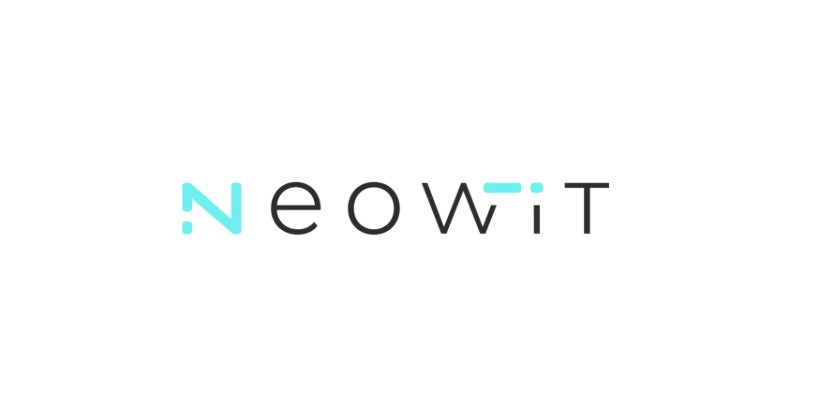

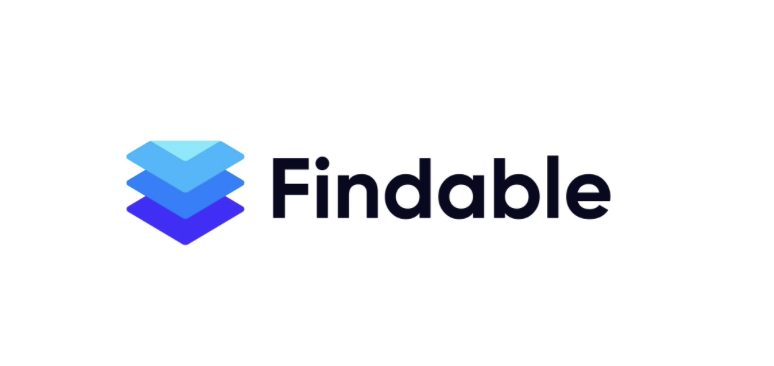

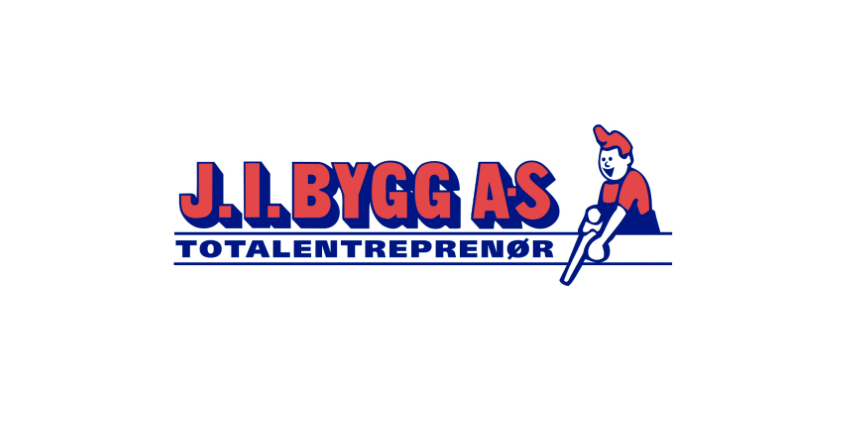



HOW TO BUILD SMART BUILDINGS - 5 TACTICS
This section presents five strategies and tips for stakeholders when building a smart building. These tactics come from stakeholders in the built environment industry who have been actively involved in building and designing some of the smartest buildings in the world.
What is the end goal of the building? Is it superior user experience, a specific return on investment, or maybe an easier building operation experience? Whatever the specific goal, once it has been defined and committed to, next is to determine the features of the building that will help realize this goal. Once the features have been defined, the next step is to define the technology required to create the desired features. Next is to envision and determine how these technologies will be integrated into the building. This also encompasses building flexibility into the smart systems, often in the form of smart “grids” where all technical components are grouped together and designed to work in smaller areas. This enables smart functionality to accommodate future changes with respect to new tenants, floor designs and layouts without the need to rebuild entire systems.

HOW TO BUILD SMART BUILDINGS - 5 TACTICS
-
“Our main goal in building Hausmanns Hus was not to build a smart building but to build a great building, smart just came out as the best way to do that. And foundation and relationships were paramount to success; it’s not just what you see, it has to be built well from the bottom up. As they say, don’t forget leg day! ”
– Martin Almerud, CTO, Hathon
First and foremost, decide on and commit to creating a smart building and the process of achieving that goal, knowing that it will be different and challenging but that the rewards in the end will be worth it. This means committing 100% from the start, not in increments or partially.
“Creating a seamless yet dynamic experience where things just work and individuals see what they want but otherwise flow through a space that is intuitive and natural, that is the power of fusion between great audio-visual and smart technology”
-Patrick Edwards, CEO Neowit
These steps are important to do early in the process to be sure that the smart features work from the first day the building is in operation. For many buildings, smart technologies are added later in the design process or even once the building is operating. This can lead to complications or inefficiencies in the long run. An early focus on technology provides a better result and a smarter building because the use of the smart features is intentional and in line with the building features and goals. This allows the smart technologies to live up to their intended potential.
-
As previously stated, a smart building is not simply sensors and technology, a smart building encompasses how technologies and building systems are integrated and managed to allow for monitoring and improvements. If you start by asking, “What systems in the building do we want to monitor with the goal of improving performance based on the data collected?”, the list can quickly become overwhelming.
Because of the large amount of data being collected in a smart building, it is important to have building owners and building managers that have ownership over the data and are actively involved and interested in data management. This includes not being scared of data or overwhelmed by it. Only by getting up close and personal with the building’s technologies and data can you get a clear picture of what is working well, what isn’t working well, and where there are new opportunities to push technologies further. This will fundamentally mean that current building management expertise will need to be extended to include smart functionality (10).
"Filling buildings with a lot of sensors in the belief that 'more is always better' is a misconception. An abundance of data without clear direction or purpose only leads to confusion rather than clarity. True value is achieved through carefully selected monitoring, based on precise needs. Expand collecting of data when the time is right and you know your needs. Ultimately, it is the human who must make the wise decisions and adapt the operation, where less, but targeted data, is often the key to success."
-Magnus Steffensen, CEO FDVhuset//FAMAC
For owners of smart buildings with tenants, this also means that when a tenant signs a contract for a space in a smart building they are also committing to the smart building and the features that it entails. This means that data about their energy usage and other parameters measured by the smart system are shared with the owner so they can effectively monitor the building and make adjustments as needed. Tenants may not even be aware of all the smart features available or working behind the scenes but it is important to be completely transparent with tenants about the building performance and how the smart technologies are working. By providing tenants with this kind of insight, building users will become conscious about how they use the building and be empowered to make changes to improve their environmental, economic and social outcomes. The more stakeholders are involved and included, with transparent systems, smart building certification, and documentation, the more the longevity of a smart building program is ensured.
“We are honored to have our AI-driven document platform play a pivotal role in securing and organising the technical documentation for Hausmanns Hus. Our software ensures that all essential documents are meticulously organized and seamlessly synchronized with their facility management system, contributing significantly to the building's operational excellence and sustainability.”
-Sondre Malde Pedersen, CCO Findable
-
Building a smart building takes a lot of planning and effort. Technical specifications for the building will be different than those of a conventional building and therefore require additional time and expense to prepare and will require changes and adjustments during the engineering phase. The concept of implementing smart features will be new to a lot of people involved in the process and may seem like a chore or a burden if they don’t understand what is required or the vision behind it. Time (and money) must be dedicated to helping all stakeholders understand the impact of the smart features on the final quality of the building, but eventually these stakeholders (e.g., contractors, designers, installers) will begin to see the benefits in quality when you have smart features.
Make sure you are comfortable and satisfied with what is being measured in the building. If you see gaps, talk to your technology providers – they should be willing to work with you (and with each other) to optimize and innovate.
Like building anything there is great room for error if stakeholders, tools, and expert parties aren’t aligned. Communication, setting goals and expectations can not only make things work and run smoothly it can also open up new opportunities. What we were able to accomplish together (Hathon Sponsorship) was far beyond what would happen as a siloed project.
-Eirik Bjørnstad, Automation Advisor EvoTek
Plan for transparency about smart features and data with the building tenants and occupants. Show them and tell them what data is being collected and why. When you are open and honest then tenants will be happier with their experience in the building. By sharing data with tenants you can also show them make them conscious about how they use the building - what they are doing well and what they could improve. The building usage could even be gamified to allow for competition between tenants.
Although this may seem like an overwhelming and costly endeavour, lessons learned can provide valuable insights for future projects. Also, there is value for the industry as a whole in advancing knowledge and awareness of the power and impact of smart buildings.
-
It is important that once the smart building is in operation there is proper follow-up in the form of research to make sure the positive impacts of smart infrastructure are realized. This means quantifying and qualifying the realized economic, environmental and social impacts of smart infrastructure compared to a baseline or reference case. Partnering with academic researchers is a good way to collaborate to evaluate and improve your building’s performance and the situation is win-win: the researchers have access to your data (which they need to do their studies) and you gain insights into and evaluation of your building performance that might not have been accessible to you otherwise.
“What we see is the builders of the best smart buildings are usually the most curious, willing to learn, willing to be transparent and share their knowledge with others. That is why we created the collective, to go to the next step, whether that be including a new technology, utilizing existing tech in a different way, or innovating the space beyond its current function. It’s exciting to see what the collective can accomplish together and that is why we are so selective.”
-Elizabeth Nelson, Co-founder Smart Building Collective|Certification & PhD Candidate, Biomedical Engineering, University of Twente
As mentioned previously, make sure you have access to and permission to collect and use the building data so you can share it with researchers. You can also meet researchers by participating in conferences and industry events where they are presenting or attending. Smart technology providers and Smart Building Certification bodies may also be a bridge to quantifying and qualifying the actual smartness of your building in an academic and more scientific way.
-
If you want to claim to be a smart building, it’s a good idea to have an independent third-party expert back up that claim. A Smart Building Certification can assess the level of smartness of a building based on key areas, including indoor environmental quality, governance, safety and security. With third-party verification of the “smartness” of the building, a better view of the impact of the smart features can also be gained and communicated to all those working on the project.
The classic benefits of a certification are higher rent or sales, prestige, higher demand for space thus faster rental or purchase, which is already quite an achievement. Where we keep going is optimizing the space, improving operation and increasing business models/ ROI. Hathon was eager to push the limits and create a space that functioned beyond what had been done before.
- Nicholas White Co-founder and Managing Director Smart Building Collective|Certification
“A (Platinum-level) Smart Building Certification for Hausmanns Hus helps us to disseminate knowledge in the industry and ultimately open the eyes of stakeholders and make them more aware of the benefits of smart buildings. But it also forces us to go back and optimize to see if we did it the right way, where we can optimize. For instance, do we need so many clouds for our data? You know what they say about too many clouds, it gets cloudy.”
-Martin Almerud, Technical Manager Sustainability, Hathon
It is important to recognize that all smart buildings are different and can’t be evaluated appropriately with a simple checklist - especially for such a new trend where best practices and new lessons are constantly being learned as smarter and smarter buildings are being designed and constructed. Evaluation of the smartness of buildings must be flexible and rooted in science, an approach that Smart Building Certification adopts. In addition, while a building can be certified as “smart” during design/construction, it is also important to work with your certification provider during building operation as a means of actually testing, proving and improving the level of “smartness” of your building.
10. Pašek, J.; Sojková, V., Facility management of smart buildings. International Review of Applied Sciences and Engineering 2018, 9 (2), 181-187.
“Smartwashing“
Smart technologies and smart buildings have obvious benefits. This is why there is a trend towards increasing claims of “smartness” from many actors in the built environment industry. Smart is a buzzword right now and many companies are claiming that they, their products, their services are “smart” with no proof and no guidelines to define what is truly smart and what is not. As with sustainability claims, smartness claims for buildings should be verified in a systematic and proven way (e.g., via a third party certification).
Ask for proof. If there is no proof of smartness to match the claims, that’s smartwashing.
READ OUR ARTICLE: LINK
CONCLUSIONS
Smart buildings offer value to building occupants and building owners. In addition to economic value, smart buildings also offer environmental and social value, which should not be discounted. Value is also generated in the process of designing and building a smart building because it raises the level of knowledge about smart features within the industry as a whole.
It is important to set a clear goal to build smart and commit 100% to achieving it, including budget commitments. Early focus on smart goals and features will improve the likelihood that smart solutions will be fully functional from day 1, reducing the chances for errors, inefficiencies and technical problems. Smart building takes effort and buy-in from all involved stakeholders, requiring a different approach and openness to explain the benefits and get the entire team on board with the vision.
Third-party verification like the Smart Building Certification can be extremely valuable in differentiating what is truly “smart” and communicating that (and associated impacts) to a broader audience. In the longer term, the true impacts of the smart features can be better understood, quantified and qualified in collaboration with research partners, as the building is managed and operated over its lifetime. Collaboration, transparency and sharing, including through research, is crucial to measure and report the true impact (economic, environmental and social) of a smart building.

With partners they make it happen:

REFERENCES
1. Hart, J.; Adams, K.; Giesekam, J.; Tingley, D. D.; Pomponi, F., Barriers and drivers in a circular economy: the case of the built environment. Procedia Cirp 2019, 80, 619-624.
2. Froufe, M. M.; Chinelli, C. K.; Guedes, A. L. A.; Haddad, A. N.; Hammad, A. W.; Soares, C. A. P., Smart buildings: Systems and drivers. Buildings 2020, 10 (9), 153.
3. Nelson, E. C. W., H. E; White, N. C., The Future of Work, Workplaces and Smart Buildings. In ACM BuildSys '22, Boston, USA, 2022.
4. Franco, A.; Leccese, F., Measurement of CO2 concentration for occupancy estimation in educational buildings with energy efficiency purposes. Journal of Building Engineering 2020, 32, 101714.
5. (IEA), I. E. A. Buildings Tracking Report September 2022; 2022.
6. Shen, W.; Xue, H. H.; Newsham, G.; Dikel, E. In Smart building monitoring and ongoing commissioning: A case study with four canadian federal government office buildings, 2017 IEEE International Conference on Systems, Man, and Cybernetics (SMC), IEEE: 2017; pp 176-181.
7. MacNaughton, P.; Satish, U.; Laurent, J. G. C.; Flanigan, S.; Vallarino, J.; Coull, B.; Spengler, J. D.; Allen, J. G., The impact of working in a green certified building on cognitive function and health. Building and environment 2017, 114, 178-186.
8. Newsham, G. R.; Birt, B. J.; Arsenault, C.; Thompson, A. J.; Veitch, J. A.; Mancini, S.; Galasiu, A. D.; Gover, B. N.; Macdonald, I. A.; Burns, G. J., Do ‘green’ buildings have better indoor environments? New evidence. Building Research & Information 2013, 41 (4), 415-434.
9. Muldavin, S.; Miers, C. R.; McMackin, K., Buildings emerge as drivers of health and profits. Corporate Real Estate Journal 2017, 7 (2), 177-193.
10. Pašek, J.; Sojková, V., Facility management of smart buildings. International Review of Applied Sciences and Engineering 2018,9 (2), 181-187.





Partners
-

FAMAC by FDVhuset
FDVhuset AS is one of Norway's leading suppliers of software and services in the management, operation and maintenance of property. We develop FAMAC, which is specially designed for building owners and building operators. We currently have more than 30,000 users and 40 million square meters of buildings in our system. We streamline Norwegian property management!
-

Neowit
The Neowit Platform is a modern & scalable IoT, Facility management and Workplace platform that gives you a complete overview of your office or buildings. Imagine your Building and Office is a digital twin that learns and acts for you and your employees.
-

Findable
Automating documentation with AI to enable digitization, compliance and sustainability within real estate. for buildings and building projects.
Automatic sorting of all building documentation
Always up-to-date documentation
Saving you hundreds of hours per building
-

Izy
The working day of the future should be seamless, productive and sustainable - and we develop digital solutions to get there. We are behind the Izy app, which is used in office buildings to pay in the canteen, book meeting rooms, order food and services. We are constantly developing new services in our ecosystem to improve the everyday working life of our users, and we want to help them make good, simple and sustainable choices every single day.
-

Metier
In collaboration with our clients, partners, and each other, we solve meaningful challenges through better projects, business development, and digital transformation. Together, we make change possible. As an organization, Metier has a history that dates back 40 years. With 250 employees, 800 MNOK in annual revenue, and a client portfolio consisting of approximately 600 small and large businesses. Metier is owned by the American Tetra Tech, which has 27,000 employees.
-

J.I.BYGG AS
General contractor J.I. Bygg AS develops and implements all types of construction projects for public and private professional clients. As a major player in the industry, J.I. Bygg AS to take responsibility. We focus on the environment and sustainability, and work to deliver buildings that are developed for the future. We do this by working purposefully with good environmental measures such as life cycle thinking, recycling and environmental certification, and we encourage our clients to do the same.
-

Avigilon by Motorola
Avigilon was acquired by Motorola Solutions in 2018 and is now part of its ecosystem of safety and security technologies. Avigilon's security suite provides a comprehensive portfolio of end-to-end video security products and services that is part of Motorola Solutions’ technology ecosystem. It provides flexible, modular layers of security, through fixed video, advanced analytics and smart access control systems with deployment options for both cloud and on-premise security.
-

EvoTek
EvoTek offers consultancy services within energy consultancy, client services and interdisciplinary technical consultancy. We want to help our customers create environmentally friendly operations and have a clearly documented environmental profile. Introducing energy management is one of our main areas. As advisers, we can contribute to interaction and communication at a high level in construction projects, so that technology can become a tool for maintaining a good indoor environment, correct use of resources and minimal stress on the external environment.
-

KlimaControl AS
KlimaControl AS is an automation contractor company founded in 1997. Today we are 20 employees and are among the largest players in the market. We supply mainly national but also deliver abroad. We supply automation and control systems for commercial buildings. With reputable suppliers, we compose system solutions adapted to the Norwegian market. Digital system solutions implemented based on the customers needs, locally built or internet-based.
-

Microsoft
Our mission is to empower every person and every organization on the planet to achieve more.
-

SBC | Certification
While most people are focused on the what and the how, this certification is about the why. Why do we have smart buildings? Hopefully it is to improve, optimize, and innovate.

ABOUT HATHON
Hathon Holding AS is owned by Jorunn Marie Thon, Olav Engebret Thon and Halgrim Thon. Halgrim worked for 31 years as property manager in the Olav Thon Group, of which 18 years as managing director of the listed company Olav Thon Eiendomsselskap ASA. In 2000, he left Olav Thon to invest in his own portfolio. The group focuses on real estate investments mainly in Norway, Sweden and Denmark. Real estate investments include both long-term real estate holdings and several development projects. In addition, the group has a number of financial investments in shares and securities.
ABOUT SMART BUILDING COLLECTIVE
Smart Building Collective was founded as an initiative to establish an honest and independent platform that appraises buildings all around the globe on the basis of how smart they are. The Smart Building Certification is: ‘Founded in Science, refined in practice and constantly optimised by our network of experts’. The certification has a strong foundation in academic research and partnerships as well as what is growing to be the largest collaborative ecosystem within the smart building space. Collectively we can change the world.
“Smart building is a constantly evolving practice of implementing, using and optimizing infrastructure to learn about and improve function, service, performance and utility of the built environment. A smart building refers to the application of data to drive autonomous controls or building automation (that brings the intelligence), through integrated design which connects systems and processes to deliver improved health, wellness, human performance, comfort, efficiency, safety and security.”
- Smart Building Collective Published Definition

Get in touch to learn more
Author: Elizabeth Nelson & Heather Ray in Collaboration
Co-Founder & Head of Research & Innovation
+31 642683161








